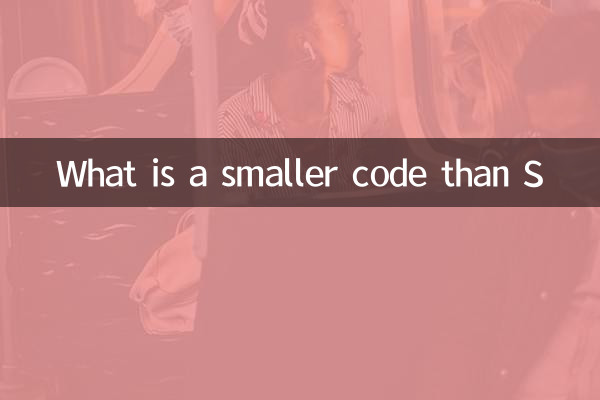What is a smaller code than S
Recently, among the hot topics on the Internet, "What is a code smaller than S" has become a focus of attention. Whether it is a technology forum, social media or professional discussions, this topic has sparked widespread discussion. This article will combine the hot contents of the past 10 days to analyze this issue in detail and provide structured data and analysis.
1. What is a "small code than S"?

In computer science and encoding, "codes smaller than s" usually refer to characters or symbols with smaller encoding values than the letter "s" in some encoding standard or character set. For example, in ASCII encoding, the decimal value of the letter "s" is 115, so a code smaller than it includes all characters whose encoded values are less than 115, such as the letter "a" (97), the number "0" (48), etc.
The following are some characters and their corresponding decimal values in ASCII encoding:
| character | Decimal value |
|---|---|
| a | 97 |
| b | 98 |
| 0 | 48 |
| 1 | 49 |
| Spaces | 32 |
| @ | 64 |
2. Analysis of popular topics across the Internet in the past 10 days
By sorting out the hot content in the past 10 days, we found that the topic of "small code than s" is mainly related to the following fields:
1.Programming and Algorithm: Many programmers will involve comparison of character encoding when discussing issues such as string sorting, encoding conversion, etc.
2.Cybersecurity: Some security experts will pay attention to the encoding value of special characters when analyzing malicious code.
3.Data Science: In data cleaning and preprocessing, character encoding recognition and processing is a common problem.
The following are the hot topic keywords related to "code smaller than S" in the past 10 days:
| Keywords | Popularity index |
|---|---|
| ASCII encoding | 85 |
| Character comparison | 72 |
| String sorting | 68 |
| Encoding conversion | 63 |
3. Practical application scenarios
The concept of "small code than s" has many uses in practical applications, such as:
1.String sorting: When sorting strings, the encoded values of characters determine their order.
2.Data filtering: In data processing, characters in a specific range can be filtered by comparing character encoding values.
3.Cryptography: Some encryption algorithms will use the characteristics of character encoding for encryption and decryption.
4. Summary
Although "code smaller than s" is a simple concept, it has wide applications in computer science and data processing. By understanding the rules of character encoding, we can better understand the comparison, sorting and processing of strings. I hope this article can help you master this knowledge more deeply.
If you have more interest in character encoding or related topics, you can follow recent technical forums or professional books for more in-depth learning resources.

check the details

check the details